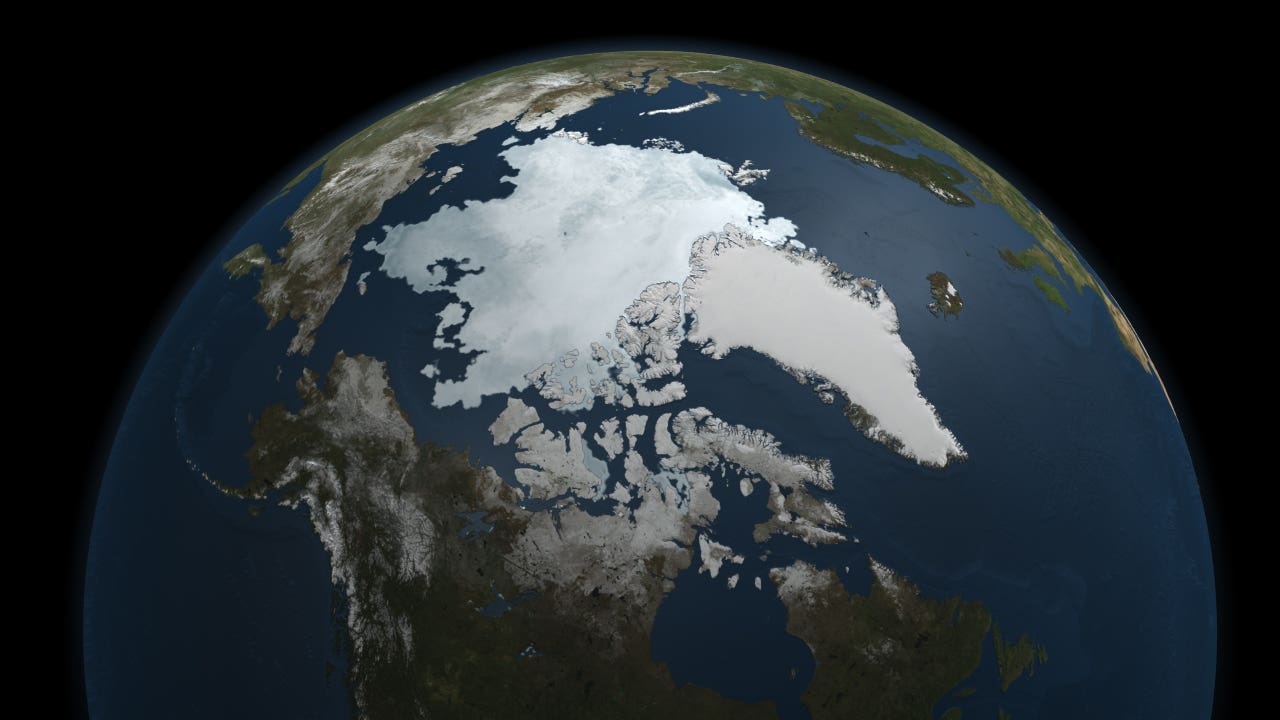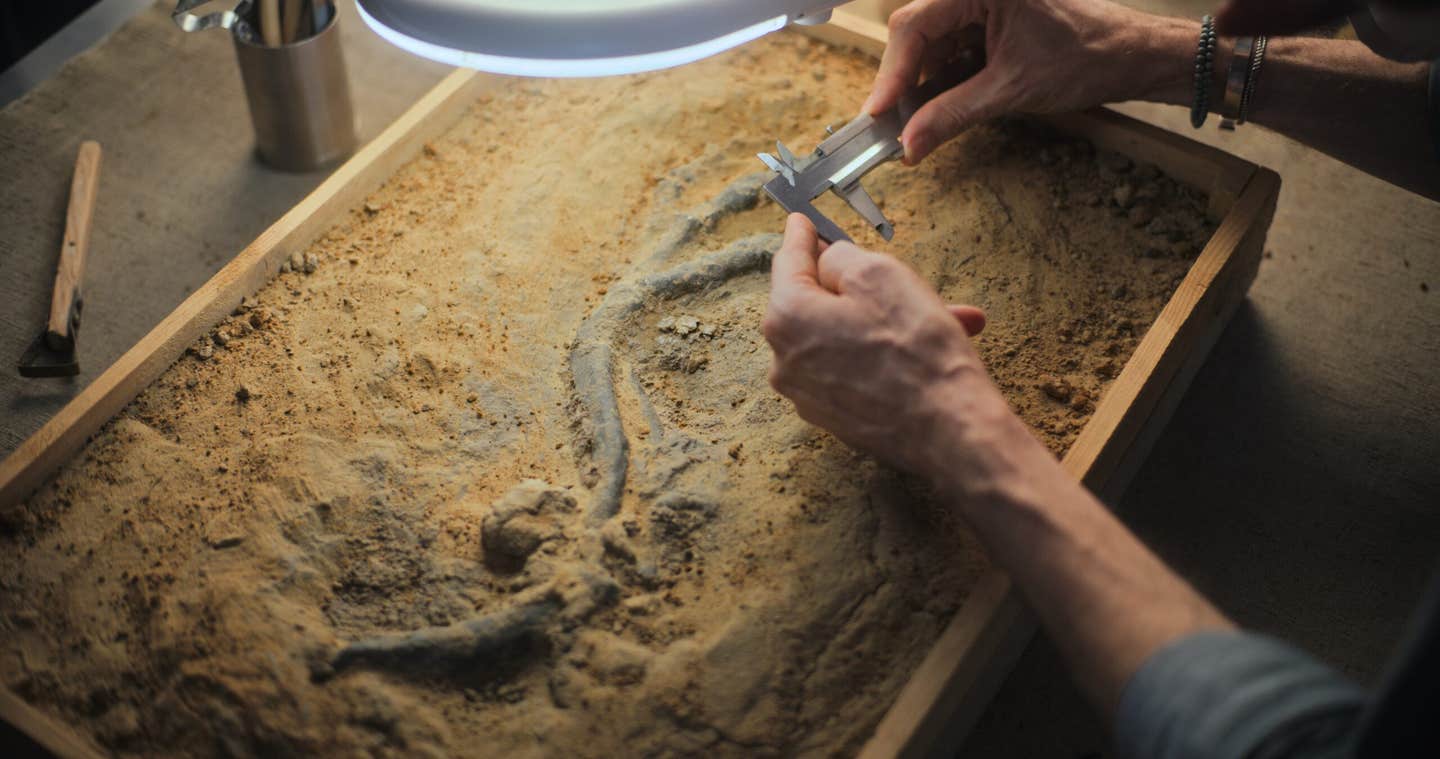The Earth shifted 25 degrees and then corrected itself 84 million years ago
Scientists find strong proof of Earth’s crust tipping 84 million years ago through new paleomagnetic evidence from Italy.

Fresh paleomagnetic data from Italy shows Earth’s crust tipped and corrected itself 84 million years ago, confirming true polar wander. (CREDIT: NASA’s Scientific Visualization Studio)
Hold onto your sense of balance. Scientists have found fresh proof that Earth doesn't just drift through space — sometimes, it actually tips over. You already know that continents slowly move due to plate tectonics.
But there's something even stranger: the entire solid shell of Earth—the mantle and crust—can slide over the liquid outer core, shifting the planet’s orientation. This incredible phenomenon is called true polar wander (TPW), and new research finally tips the scale in favor of its reality.
What True Polar Wander Really Means
Earth spins like a top, completing a rotation every 24 hours. Beneath your feet, the planet is made of layers: a solid inner core, a swirling liquid outer core, and a solid mantle topped by the crust. The crust and mantle are not locked in place. Because the outer core is liquid metal, the solid parts above can move together if forces are strong enough.
This sliding can cause the entire crust and mantle to reorient around the spin axis. Dense structures like sinking ocean plates and giant volcanoes drift toward the equator, much like your arms stretch outward when you spin in a chair. In true polar wander, the surface of Earth shifts without changing the planet’s magnetic field, which is generated deeper inside by swirling currents of molten iron and nickel.
Rocks can record Earth's magnetic history. When sedimentary rocks form, tiny magnetic crystals inside them align with the local magnetic field. These "fossil compasses" preserve the direction and tilt of Earth’s magnetic field when the rocks were created. Scientists can then use these magnetic fingerprints to figure out where the poles were millions of years ago.
As Joe Kirschvink of the Earth-Life Science Institute at Tokyo Institute of Technology explains, "True polar wander would look like the Earth tipping on its side, and what's actually happening is that the whole rocky shell of the planet—the solid mantle and crust—is rotating around the liquid outer core."
Today, satellites measure tiny shifts in Earth's rotation with high precision. But whether major true polar wander events happened in the past has remained a hot scientific debate—especially when it comes to one curious time: about 84 million years ago during the Late Cretaceous.
Related Stories
The Great 84-Million-Year Debate
For decades, geologists have argued over whether a large-scale true polar wander occurred during the Late Cretaceous. Earlier studies of Italian limestone known as the Scaglia Rossa claimed there was no such event. However, those studies had problems. The older data sets only used a few measurements between 90 and 75 million years ago. They also lacked modern tools like superconducting magnetometers and precise thermal demagnetization techniques.
Ross Mitchell from the Institute of Geology and Geophysics in Beijing, along with Kirschvink, knew a better approach was needed. They focused on the same Italian limestones, which stretch across the Apennine Mountains. These rocks, between about 145.5 and 65.5 million years old, hold a detailed magnetic history.
Previous research even connected younger rocks from this area to the asteroid impact that killed the dinosaurs. Sarah Slotznick, a geobiologist at Dartmouth College, points out something special: the magnetic minerals in these rocks are actually fossils of bacteria that made chains of magnetite crystals. This makes them extremely reliable for paleomagnetic studies.
Gathering Mountains of Evidence
The team collected over 1,000 samples from two overlapping rock sections to ensure reproducibility. They used modern paleomagnetic methods to carefully demagnetize the rocks, measure the magnetic signals, and eliminate errors. This level of data collection was far beyond earlier attempts.
Their careful work revealed a clear ~12-degree tilt of Earth's crust and mantle about 84 million years ago. But that wasn’t all. The data showed that after tipping over, Earth corrected itself, swinging back almost to its original orientation. This cosmic "yo-yo" move involved nearly 25 degrees of movement over just about five million years.
This oscillating motion represents the most recent large-scale true polar wander event ever documented. It also challenges the long-standing idea that Earth's spin axis has stayed mostly stable over the past 100 million years.
The findings were published in Nature Communications, marking a major turning point in the decades-long debate. As Richard Gordon, a geophysicist at Rice University who was not part of the study, explains, "that is one reason why it is so refreshing to see this study with its abundant and beautiful paleomagnetic data."
Why It Matters for Understanding Earth’s History
Confirming a large true polar wander event has huge implications for how you understand Earth's past. It means that major shifts of the entire surface can happen without earthquakes, volcanoes, or asteroid impacts driving them. Instead, internal forces like shifting masses inside the mantle can set off a slow but gigantic reorientation.
True polar wander also hints that Earth's stability is not absolute. Even over tens of millions of years, the planet can lurch and right itself. This newfound evidence helps explain shifts in climate, sea levels, and even the distribution of life across ancient Earth.
For decades, arguments against true polar wander rested heavily on incomplete or outdated data. But now, thanks to high-resolution magnetic records and careful science, there’s strong support that Earth’s rocky skin can and did tip and sway through deep time.
As more research digs into older rocks with modern techniques, you may learn that Earth's history includes more dramatic twists and turns than once thought. This discovery doesn't just settle a long scientific debate—it opens new questions about the forces that shape planets across the universe.
If Uncorrected, How Would This Shift Have Impacted the Earth
The true polar wander event's effects on the surface would have unfolded over millions of years. This long timescale means the shift would not have caused sudden global chaos like earthquakes or tsunamis, but it would have slowly changed climate zones, sea levels, and ecosystems. Here's how that could have affected surface conditions and wildlife:
Climate Shifts and Habitat Disruption
As the entire crust rotated relative to the spin axis, landmasses would have gradually moved toward or away from the poles and equator. Regions that were once tropical could have cooled, while temperate zones might have become warmer and more humid. These changes would reshape ecosystems:
- Rainforests could shrink or expand depending on moisture and temperature shifts.
- Deserts might form in areas that became drier.
- Polar ice coverage could advance or retreat depending on new continental positions.
These changes would force animals to adapt, migrate, or go extinct if they couldn’t survive in their changing environments. For example:
- Cold-adapted species in polar regions might be pushed to extinction if their habitats warmed too much.
- Species depending on specific climate cues for breeding or migration—like birds or amphibians—would face disrupted life cycles.
Ocean Currents and Sea Levels
Changes in the planet's mass distribution would also alter the balance of Earth's rotation. This could subtly adjust gravitational pull across the globe, leading to regional sea-level changes. Some coastal regions might flood over millions of years, while others could become exposed land.
Ocean currents would also respond to the new orientation of the continents and climate belts. These currents are critical for transporting heat and nutrients. A shift could drastically affect marine ecosystems, such as plankton blooms, coral reef health, and fish migration routes.
Evolutionary Pressures
While slow on a human timescale, a 12°-25° crustal tilt over five million years is enough to apply significant evolutionary pressure:
- Species with high adaptability or wide ranges would survive or even thrive.
- Isolated or specialized species would likely suffer extinctions.
- New ecological niches could emerge, sparking diversification and evolutionary innovation—similar to what happens after mass extinction events.
Fossil Record Clues
If true polar wander events caused climate-driven extinctions or migrations, you might find evidence in the fossil record: species disappearing from some regions and appearing in others, shifts in plant types, and changes in sediment composition reflecting new climates.
In short, true polar wander would not have been a single catastrophic event. But over millions of years, it would have quietly but powerfully reshaped Earth's surface, its climate, and life itself—acting as a hidden hand steering evolution and extinction alike.
Note: The article above provided above by The Brighter Side of News.
Like these kind of feel good stories? Get The Brighter Side of News' newsletter.



